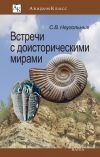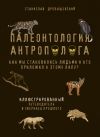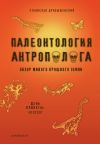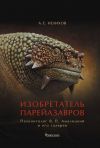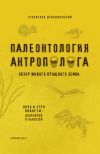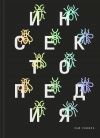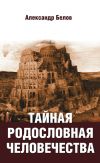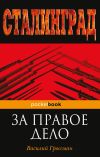Текст книги "Палеонтология антрополога. Три эры под одной обложкой"
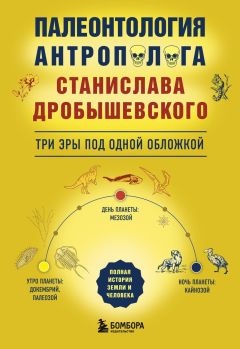
Автор книги: Станислав Дробышевский
Жанр: Биология, Наука и Образование
Возрастные ограничения: +12
сообщить о неприемлемом содержимом
Текущая страница: 21 (всего у книги 75 страниц) [доступный отрывок для чтения: 24 страниц]
Библиография
ВВЕДЕНИЕ
Иванов А.О., Черепанов Г.О. Ископаемые низшие позвоночные. СПб., Издательство СПбГУ, 2007, 228 с. Кэролл Р. Палеонтология и эволюция позвоночных. Т. 1–3. М., Мир, 1992–1993.
Основы палеонтологии. Т. 1–15. Ред.: Ю.А. Орлов. М., Государственное научно-техническое издательство литературы по геологии и охране недр, 1959–1963.
Черепанов Г.О., Иванов А.О. Ископаемые высшие позвоночные. СПб., Издательство СПбГУ, 2007, 202 с.
Шопф Т. Палеоокеанология. М., Мир, 1982, 311 c.
Kennedy M.J., Reader S.L. et Swierczynski L.M. Preservation records of micro-organisms: evidence of the tenacity of life // Microbiology, 1994, V.140, pp.2513–2529.
Legat A., Denner E.B.M., Dornmayr-Pfaffenhuemer M., Pfeiffer P., Knopf B., Claus H., Gruber C., Konig H., Wanner G. et Stan-Lotter H. Properties of Halococcus salifodinae, an isolate from Permian rock salt deposits, compared with Halococci from surface waters // Life, 2013, V.3, pp.244–259.
Stan-Lotter H., McGenity T.J., Legat A., Denner E.B.M., Glaser K., Stetter K.O. et Wanner G. Very similar strains of Halococcus salifodinae are found in geographically separated Permo-Triassic salt deposits // Microbiology, 1999, V.145, pp.3565–3574.
Yashina S., Gubin S., Maksimovich S., Yashina A., Gakhova E. et Gilichinsky D. Regeneration of whole fertile plants from 30,000-y-old fruit tissue buried in Siberian permafrost // Proceedings of the National Academy of Sciences, USA, 2012, V.109, № 10, pp.4008–4013.
ДОКЕМБРИЙ
Бурзин М.Б. Докембрийские предтечи «пионеров суши» // Природа, 1998, № 3, сс.83–95.
Бурзин М.Б. Древнейший хитридиомицет (Chytridiomycetes Incertae sedis) из верхнего венда Восточно-Европейской платформы // Фауна и экосистемы геологического прошлого. М., Недра, 1993, сс.21–33.
Гражданкин Д.В., Маслов А.В. Место венда в Международной стратиграфической шкале // Геология и геофизика, 2015, Т.56, № 4, сс.703–717.
Снигиревский С.М., Снигиревская Н.С. Находки ископаемых остатков древних растений на северо-западе Русской платформы // Биосфера, 2016, Т.8, № 1, сс.79–99.
Соколов Б.С. Очерки становления венда. М., КМК Лтд, 1997, 154 с.
Amelin Yu., Krot A.N., Hutcheon I.D. et Ulyanov A.A. Lead isotopic ages of chondrules and calcium-aluminum – rich inclusions // Science, 2002, V.297, № 5587, pp.1678–1683.
Bailey J.V., Joye S.B., Kalanetra K.M., Flood B.E. et Corsetti F.A. Evidence of giant sulphur bacteria in Neoproterozoic phosphorites // Nature, 2007, V.445, № 7124, pp.198–201. эмбрионы из Доушаньто
Baker J., Bizzarro M., Wittig N., Connelly J. et Haack H. Early planetesimal melting from an age of 4.5662 Gyr for differentiated meteorites // Nature, 2005, V.436, № 7054, pp.1127–1131.
Barghoorn E.S. et Tyler S.A. Microorganisms from the Gunflint Cherts // Science, 1965, V.147 № 3658, pp.563–577. Huroniospora microreticulata
Baum D.A. et Baum B. An inside-out origin for the eukaryotic cell // BMC Biology, 2014, V.12, p.76.
Bell Ph.J.L. Viral eukaryogenesis: was the ancestor of the nucleus a complex DNA virus? // Journal of Molecular Evolution, 2001, V.53, pp.251–256.
Belova M.Yu. et Akhmedov A.M. Petsamomyces, a new genus of organic-walled microfossils from the coal-bearing deposits of the Early Proterozoic, Kola Peninsula // Paleontological Journal, 2006, V.40, pp.465–475.
Bengtson S. et Budd G. Comment on «Small bilaterian fossils from 40 to 55 million years before the Cambrian» // Science, 2004, V.306, № 5700, p.1291.
Bobrovskiy I., Hope J.M., Ivantsov A., Nettersheim B.J., Hallmann Ch. et Brocks J.J. Ancient steroids establish the Ediacaran fossil Dickinsonia as one of the earliest animals // Science, 2018, V.361, № 6408, pp.1246–1249.
Bobrovskiy I., Hope J.M., Krasnova A., Ivantsov A. et Brocks J.J. Molecular fossils from organically preserved Ediacara biota reveal cyanobacterial origin for Beltanelliformis // Nature Ecology & Evolution, 2018, V.2, № 3, pp.437-44.
Butterfield N.J. Probable Proterozoic fungi // Paleobiology, V.31, № 1, 2005, pp.165–182. Tappania
Chen Ju.-Yu., Bottjer D.J., Oliveri P., Dornbos S.Q., Gao F., Ruffins S., Chi H., Li Ch.-W. et Davidson E.H. Small bilaterian fossils from 40 to 55 million years before the Cambrian // Science, 2004, V.305, № 218, pp.218–222.
Chen Ju.-Yu., Bottjer D.J., Li G., Hadfield M.G., Gao F., Cameron A.R., Zhang Ch.-Yu, Xian D.-Ch., Tafforeau P., Liao X. et Yin Z.-Ju. Complex embryos displaying bilaterian characters from Precambrian Doushantuo phosphate deposits, Weng'an, Guizhou, China // Proceedings of the National Academy of Sciences, USA, 2009, V.106, № 45, pp.19056-19060.
Chen Zh., Chen X., Zhou Ch., Yuan X. et Xiao Sh. Late Ediacaran trackways produced by bilaterian animals with paired appendages // Science Advances, 2018, V.4, № 6, p.eaao6691.
Chen Zh., Zhou Ch., Yuan X. et Xiao Sh. Death march of a segmented and trilobate bilaterian elucidates early animal evolution // Nature, 2019, V.573, pp.412–415.
Dalrymple G. B. The age of the Earth in the twentieth century: a problem (mostly) solved // Geological Society, London, Special Publications, 2001, V.190, pp.205–221.
Dodd M.S., Papineau D., Grenne T., Slack J.F., Rittner M., Pirajno F., O'Neil J. et Little C.T. S. Evidence for early life in Earth's oldest hydrothermal vent precipitates // Nature, 2017, V.543, № 7643, pp.60–64.
Gaillard F., Scaillet B. et Arndt N.T. Atmospheric oxygenation caused by a change in volcanic degassing pressure // Nature, 2011, V.478, № 7368, pp.229–232.
Gibson B.M., Rahman I.A., Maloney K.M., Racicot R.A., Mocke H., Laflamme M. et Darroch S.A.F. Gregarious suspension feeding in a modular Ediacaran organism // Science Advances, 2019, V.5, № 0260, pp.1–9. Ernietta plateauensis
Hagadorn J.W., Xiao Sh., Donoghue Ph.C.J., Bengtson S., Gostling N.J., Pawlowska M., Raff E.C., Raff R.A., Turner F.R., Chongyu Y., Zhou Ch., Yuan X., McFeely M.B., Stampanoni M. et Nealson K.H. Cellular and subcellular structure of Neoproterozoic animal embryos // Science, 2006, V.314, № 291, pp.291–294. эмбрионы из Доушаньто
Han T.-M. et Runnegar B. Megascopic eukaryotic algae from the 2.1 – billion-year-old Negaunee Iron-Formation, Michigan // Science, 1992, V.257, № 5067, pp.232–235.
Huldtgren Th., Cunningham J.A., Yin Ch., Stampanoni M., Marone F., Donoghue Ph.C.J. et Bengtson S. Fossilized nuclei and germination structures identify Ediacaran ''animal embryos'' as encysting protists // Science, 2011, V.334, № 6063, pp.1696–1699. эмбрионы из Доушаньто
Just J., Kristensen R.M. et Olesen J. Dendrogramma, new genus, with two new non-bilaterian species from the marine bathyal of Southeastern Australia (Animalia, Metazoa incertae sedis) – with similarities to some medusoids from the Precambrian Ediacara // PLOS One, 2014, V.9, № 9, p.e102976.
Loron C.C., Francois C., Rainbird R.H., Turner E.C., Borensztajn S. et Javaux E.J. Early fungi from the Proterozoic era in Arctic Canada // Nature, 2019, V.570, № 7760, pp.232–235.
Love G.D., Grosjean E., Stalvies Ch., Fike D.A., Grotzinger J.P., Bradley A.S., Kelly A.E., Bhatia M., Meredith W., Snape C.E., Bowring S.A., Condon D.J. et Summons R.E. Fossil steroids record the appearance of Demospongiae during the Cryogenian period // Nature, 2009, V.457, V.5, № 7230, pp.718–721.
Lyons T.W., Reinhard Ch.T. et Planavsky N.J. The rise of oxygen in Earth's early ocean and atmosphere // Nature, 2014, V.506, № 7488, pp.307–315. появление кислорода на планете
Manhes G., Allegre C.J., Dupre B. et Hamelin B. Lead isotope study of basic-ultrabasic layered complexes: speculations about the age of the Earth and primitive mantle characteristics // Earth and Planetary Science Letters, 1980, V.47, pp.370–382.
O'Hara T.D., Hugall A.F., MacIntosh H., Naughton K.M., Williams A. et Moussalli A. Dendrogramma is a siphonophore // Current Biology, 2016, V.26, pp.R445-R460.
Pecoits E., Konhauser K.O., Aubet N.R., Heaman L.M., Veroslavsky G., Stern R.A. et Gingras M.K. Bilaterian burrows and grazing behavior at >585 million years ago // Science, 2012, V.336, № 6089, pp.1693–1636.
Petryshyn V.A., Bottjer D.J., Chen Ju.-Yu. et Gao F. Petrographic analysis of new specimens of the putative microfossil Vernanimalcula guizhouena (Doushantuo Formation, South China) // Precambrian Research, 2011, V.225, pp.58–66.
Raff E.C., Villinski J.T., Turner F.R., Donoghue Ph.C.J. et Raff R.A. Experimental taphonomy shows the feasibility of fossil embryos // Proceedings of the National Academy of Sciences, USA, 2006, V.103, № 15, pp.5846–5851. эмбрионы из Доушаньто
Roos de A.D.G. The origin of the eukaryotic cell based on conservation of existing interfaces // Artificial Life, 2006, V.12, pp.513–523.
Santarella-Mellwig R., Pruggnaller S., Roos N., Mattaj I.W. et Devos D.P. Three-dimensional reconstruction of bacteria with a complex endomembrane system // PLOS Biology, 2013, V.11, № 5, p.e1001565.
Shields-Zhou G.A., Porter S. et Halverson G.P. A new rock-based definition for the Cryogenian Period (circa 720–635 Ma) // Episodes, 2016, V.39, № 1.
Spang A., Saw J.H., Jorgensen S.L., Zaremba-Niedzwiedzka K., Martijn J., Lind A.E., Eijk van Roel, Schleper Ch., Guy L. et Ettema ThJ.G. Complex archaea that bridge the gap between prokaryotes and eukaryotes // Nature, 2015, V.521, № 7551, pp.173–179. Lokiarchaeum
Sperling E. A. et Vinther J. A placozoan affinity for Dickinsonia and the evolution of late Proterozoic metazoan feeding modes // Evolution & Development, 2010, V.12, № 2, pp.201–209.
Sun W.G. Late Precambrian pennatulids (sea pens) from the Eastern Yangtze Gorge, China: Paracharnia gen. nov. // Precambrian Research, 1986, V.31, pp.361–375.
Takemura M. Poxviruses and the origin of the eukaryotic nucleus // Journal of Molecular Evolution, 2001, V.52, pp.419–425.
Tera F. Aspects of isochronism in Pb isotope systematics-application to planetary evolution // Geochimica et Cosmochimica Acta, 1981, V.45, № 9, pp.1439–1448.
Villarreal L.P. et Defilippis V.R. A hypothesis for DNA viruses as the origin of eukaryotic replication proteins // Journal of Virology, 2000, V.74, № 15, pp.7079–7084.
Wang G. Late Precambrian Annelia and Pogonophora from the Huinan of Anhui Province // Bulletin of the Tianjin Institute of Geology and Mineral Resources, 1983, V.6, pp.9-22. Pararenicola huaiyuanensis, P. fuzhouensis
Xiao Sh. et Knoll A.H. Phosphatized animal embryos from the Neoproterozoic Doushantuo formation at Weng'an, Guizhou, South China // Journal of Paleontology, 2000, V.74, № 5, pp.767–788.
Xiao Sh., Yuan X. et Knoll A.H. Eumetazoan fossils in terminal Proterozoic phosphorites? // Proceedings of the National Academy of Sciences, USA, 2000, V.97, № 25, pp.13684-13689. эмбрионы из Доушаньто
Xiao Sh., Zhang Yu. et Knoll A.H. Three-dimensional preservation of algae and animal embryos in a Neoproterozoic phosphorite // Nature, 1998, V.391, № 6667, pp.553–558. эмбрионы из Доушаньто
Yin L., Zhu M., Knoll A.H., Yuan X., Zhang Ju. et Hu J. Doushantuo embryos preserved inside diapause egg cysts // Nature, 2007, V.446, № 7136, pp.661–663. эмбрионы из Доушаньто
КЕМБРИЙ
Иванова-Казас О.М. Вторичный рот и его филогенетическое значение // Биология моря, 2015, Т.41, № 2, сс.81–91.
Иванцов A.Ю., Журавлёв A.Ю., Красилов В.A., Легута A.В., Мельниковa Л.M., Урбанек А., Ушатинская Г.T., Малаховская Я.Е. Уникальные синские местонахождения раннекембрийских организмов. Сибирская платформа. М., Наука, 2005, 143 с.
Малахов В.В. Происхождение хордовых животных // Соросовский образовательный журнал, 1996, № 7, сс.2–9.
Archibald J.M. Genomic perspectives on the birth and spread of plastids // Proceedings of the National Academy of Sciences, USA, 2015, V.112, № 33, pp.10147-10153.
Aria C. et Caron J.-B. Burgess Shale fossils illustrate the origin of the mandibulate body plan // Nature, 2017, V.545, № 7652, pp.89–92. Tokummia katalepsis
Awramik S.M. The oldest records of photosynthesis // Photosynthesis Research, 1992, V.33, pp.75–89.
Bengtson S. et Zhao Yu. Predatorial borings in late Precambrian mineralized exoskeletons // Science, 1992, V.257, № 5068, pp.367–369. Cloudina с дырками
Bengtson S., Rasmussen B. et Krapez B. The Paleoproterozoic megascopic Stirling biota // Paleobiology, 2007, V.33, № 3, pp.351–381.
Bergstrom Ja. et Xian-Guang H. Arthropod origins // Bulletin of Geosciences, 2003, V.78, № 4, pp.323–334.
Briggs D.E.G. et Collins D. The arthropod Alalcomenaeus cambricus Simonetta, from the middle Cambrian Burgess Shale of British Columbia // Palaeontology, 1999, V.42, № 6, pp.953–977.
Briggs D.E.G., Erwin D.H. et Collier F.J. The fossils of the Burgess Shale. Washington, Smithsonian Institution Press, 1994, 238 p.
Briggs D.E.G., Lieberman B.S., Halgedahl S.L. et Jarrard R.D. A new metazoan from the middle Cambrian of Utah and the nature of the Vetulicolia // Palaeontology, 2005, V.48, № 4, pp.681–686. Skeemella clavula
Brock G.A. et Paterson J.R. A new species of Tannuella (Helcionellida, Mollusca) from the early Cambrian of South Australia // Memoirs of the Association of Australasian Palaeontologists, 2004, V.30, pp.133–143.
Budd G. A Cambrian gilled lobopod from Greenland // Nature, 1993, 364, № 6439, pp.709–711. Kerygmachela
Budd G. E. The morphology of Opabinia regalis and the reconstruction of the arthropod stem-group // Lethaia, 1996, V.29, № 1, pp.1-14.
Budd G.E. Tardigrades as «Stem-Group Arthropods»: the evidence from the Cambrian fauna // Zoologischer Anzeiger – A Journal of Comparative Zoology, 2001, V.240, № 3–4, pp.265–279.
Butterfield N.J. An early Cambrian radula // Journal of Paleontology, 2008, V.82, № 3, pp.543–554.
Caron J.-B. et Aria C. Cambrian suspension-feeding lobopodians and the early radiation of panarthropods // BMC Evolutionary Biology, 2017, V.17, p.29.
Caron J.-B., Scheltema A., Schander Ch. et Rudkin D. A soft-bodied mollusc with radula from the Middle Cambrian Burgess Shale // Nature, 2006, V.442, № 7099, pp.159–163.
Chen J.Y., Edgecombe G.D., Ramskold L. et Zhou L. Head segmentation in early Cambrian Fuxianhuia: implications for arthropod evolution // Science, 1995, V.268, № 5215, pp.1339–1343. Fuxianhuia
Chen Ju.-yu., Huang D.-y. et Bottjer D.J. An early Cambrian problematic fossil: Vetustovermis and its possible affinities // Proceedings of the Royal Society B, 2005, V.272, № 1576, pp.2003–2007.
Chengjiang fossil site. Ministry of Housing and Urban-Rural Development of the People's Republic of China, 2011, 496 p.
Collins D. The «evolution» of Anomalocaris and its classification in the arthropod class Dinocarida (nov.) and order Radiodonta (nov.) // Journal of Paleontology, V.70, № 2, 1996, pp.280–293.
Daley A.C. et Legg D.A. A morphological and taxonomic appraisal of the oldest anomalocaridid from the lower Cambrian of Poland // Geological Magazine, 2015, V.152, № 5, pp.949–955.
Daley A.C., Budd G.E., Caron J.B., Edgecombe G.D. et Collins D. The Burgess Shale Anomalocaridid Hurdia and its significance for early euarthropod evolution // Science, 2009, V.323, № 5921, pp.1597–1600.
Dong L., Xiao Sh., Shen B., Yuan X., Yan X. et Peng Yo. Restudy of the worm-like carbonaceous compression fossils Protoarenicola, Pararenicola, and Sinosabellidites from early Neoproterozoic successions in North China // Palaeogeography, Palaeoclimatology, Palaeoecology, 2008, V.258, № 3, pp.138–161. Protoarenicola, Pararenicola, Sinosabellidites
Dzik J. Yunnanozoon and ancestry of chordates // Acta Palaeontologica Polonica, 1995, V.40, № 4, pp.341–360.
Dzik J. The xenusian-to-anomalocaridid transition within the lobopodians // Bollettino della Societ Paleontologica Italiana, 2011, V.50, № 1, pp.65–74. Siberion
Edgecombe G.D. et Legg D.A. The arthropod fossil record // Arthropod biology and evolution. Eds.: A. Minelli et al. Berlin, Heidelberg, Springer-Verlag, 2013, pp.393–415.
Fedonkin M.A. The origin of the Metazoa in the light of the Proterozoic fossil record // Paleontological Research, 2003, V.7, № 1, pp.9-41. Horodyskia
Gee H. Jefferies' calcichordate theory // Before the backbone: views on the origin of the vertebrates. London, Chapman & Hall, 1996.
Gould S.J. Wonderful life. The Burgess Shale and the nature of history. Norton, 1990, 347 p.
Holland L.Z. Evolution of basal deuterostome nervous systems // The Journal of Experimental Biology, 2015, V.218, pp.637–645.
Hou X. et Bergstrom J. The Chengjiang fauna – the oldest preserved animal community // Paleontological Research, 2003, V.7, № 1, pp.55–70.
Hou X. et Chen J. Early Cambrian tentacled worm-like animals (Facivermis gen. nov.) from Chengjiang, Yunnan // Acta Palaeontologica Sinica, 1989, V.28, № 1, pp.32–42.
Iu J., Shu D., Han J. et Zhang Zh. A rare lobopod with well-preserved eyes from Chengjiang Lagerstatte and its implications for origin of arthropods // Chinese Science Bulletin, 2004, V.49, № 10, pp.1063–1071. Miraluolishania
Ivantsov A.Yu. Trilobite-like arthropod from the lower Cambrian of the Siberian Platform // Acta Palaeontologica Polonica, 1999, V.44, № 4, pp.455–466.
Ivantsov A.Yu. Paleontological evidence for the supposed Precambrian occurrence of mollusks // Paleontological Journal, 2010, V.44, № 12, pp.1552–1559. Phytophilaspis
Ivantsov A.Yu., Malakhovskaya Ya.E. et Serezhnikova E.A. Some problematic fossils from the Vendian of the Southeastern White Sea region // Paleontological Journal, 2004, Vol.38, № 1, pp.1–9. Parvancorina, Solza, Karakhtia, Temnoxa, Vaveliksia
Ivantsov A.Yu., Zhuravlev A.Yu., Leguta A.V., Krassilov V.A., Melnikova L.M. et Ushatinskaya G.T. Palaeoecology of the early Cambrian Sinsk biota from the Siberian Platform // Palaeogeography, Palaeoclimatology, Palaeoecology, 2005, V.220, № 1–2, pp.69–88.
Jefferies R.P.S. The calcichordate theory // Science, 1999, V.236, № 4807, p.1476.
Keeling P.J. The endosymbiotic origin, diversification and fate of plastids // Philosophical Transactions of the Royal Society B, 2010, V.365, № 1541, pp.729–748.
Kimmig J., Strotz L.C. et Lieberman B.S. The stalked filter feeder Siphusauctum lloydguntheri n. sp. from the middle Cambrian (Series 3, Stage 5) Spence Shale of Utah: its biological affinities and taphonomy // Journal of Paleontology, 2017, V.91, № 5, pp.902–910.
Kolesnikov A.V., Liu A.G., Danelian T. et Grazhdankin D.V. A reassessment of the problematic Ediacaran genus Orbisiana Sokolov 1976 // Precambrian Research, 2018, V.316, pp.197–205.
Kolesnikov A.V., Rogov V.I., Bykova N.V., Danelian T., Clausen S., Maslov A.V. et Grazhdankin D.V. The oldest skeletal macroscopic organism Palaeopascichnus linearis // Precambrian Research, 2018, V.316, pp.24–37.
Kouchinsky A., Bengtson S., Landing E., Steiner M., Vendrasco M., et Ziegler K. Terreneuvian stratigraphy and faunas from the Anabar Uplift, Siberia // Acta Palaeontologica Polonica, 2017, V.62, № 2, pp.311–440.
Kroger B., Vinther Ja. et Fuchs D. Cephalopod origin and evolution: a congruent picture emerging from fossils, development and molecules // Bioessays, 2011, V.33, pp.602–613.
Lacalli Th. The Middle Cambrian fossil Pikaia and the evolution of chordate swimming // EvoDevo, 2012, V.3, p.12.
Landing E., Antcliffe J.B., Brasier M.D. et English A.B. Distinguishing Earth's oldest known bryozoan (Pywackia, late Cambrian) from pennatulacean octocorals (Mesozoic – Recent) // Journal of Paleontology, 2015, V.89, № 2, pp.292–317.
Lee Ch.Z. Early Cambrian Chengjiang fauna from Yunnan Province, China // Journal of the Korean Earth Science Society, 2007, V.28, № 2, pp.248–254.
Lin J.-P., Gon III S.M., Gehling J.G., Babcock L.E., Zhao Yu.-L., Zhang X.-L., Hu Sh.-X., Yuan J.-L., Yu M.-Y. et Peng J. A Parvancorina-like arthropod from the Cambrian of South China, Historical Biology // An International Journal of Paleobiology, 2006, V.18, № 1, pp.33–45.
Liu J., Han J., Simonetta A.M., Hu S., Zhang Z., Yao Y. et Shu D. New observations of the lobopodian-like worm Facivermis from the early Cambrian Chengjiang Lagerstatte // Chinese Science Bulletin, 2006, V.51, № 3, pp.358–363.
Liu J., Steiner M., Dunlop J.A., Keupp H., Shu D., Ou Q., Han J., Zhang Zh. et Zhang X. An armoured Cambrian lobopodian from China with arthropod-like appendages // Nature, 2011, V.470, № 7335, pp.526–530.
Long J.A., Young G.C., Holland T., Senden T.J. et Fitzgerald E.M.G. An exceptional Devonian fish from Australia sheds light on tetrapod origins // Nature, 2006, V.444, № 7116, pp.199–202.
Luo H., Hu Sh., Zhang Sh. et Tao Y. New occurrence of the early Cambrian Chengjiang fauna in Haikou, Kunming, Yunnan Province, and study on Trilobitoidea // Acta Geologica Sinica, 1997, V.71, № 2, pp.122–132.
Luo H., Hu Sh. et Chen L. New early Cambrian chordates from Haikou, Kunming // Acta Geologica Sinica, 2001, V.15, № 4, pp.345–348. Cathaymyrus huikouensis, Zhongxiniscus intermedius
Ma X., Hou X., Edgecombe G.D. et Strausfeld N.J. Complex brain and optic lobes in an early Cambrian arthropod // Nature, 2012, V.490, № 7419, pp.258–261.
Masiak M. et Zylinska A. Burgess Shale-type fossils in Cambrian sandstones of the Holy Cross Mountains // Acta Palaeontologica Polonica, 1994, V.39, № 4, pp.329–340.
Morris S.C. The crucible of creation the Burgess Shale and the rise of animals. Oxford University Press, 1999, 242 p.
Morris S.C. A redescription of a rare chordate, Metaspriggina walcotti Simonetta and Insom, from the Burgess Shale (middle Cambrian), British Columbia, Canada // Journal of Paleontology, 2008, V.82, № 2, pp.424–430.
Morris S.C. et Caron J.-B. Halwaxiids and the early evolution of the Lophotrochozoans // Science, 2007, V.315, № 5816, pp.1255–1258.
Morris S.C. et Caron J.-B. Pikaia gracilens Walcott, a stem-group chordate from the Middle Cambrian of British Columbia // Biological Reviews of the Cambridge Philosophical Society, 2012, V.87, № 2, pp.480–512.
Morris S.C. et Caron J.-B. A primitive fish from the Cambrian of North America // Nature, 2014, V.512, № 7515, pp.419–422. Metaspriggina walcotti
Muller K.J., Walossek D. et Zakharov A. 'Orsten' type phosphatized soft-integument preservation and a new record from the Middle Cambrian Kuonamka Formation in Siberia // Neues Jahrbuch f-r Geologie und Pal-ontologie, Abhandlungen, 1995, V.197, pp.101–118. древнейшая тихоходка
Naimark E.B. et Ivantsov A.Yu. Growth variability in the late Vendian problematics Parvancorina Glaessner // Paleontological Journal, 2009, V.43, № 1, pp.12–18.
O'Brien L.J. et Caron J.-B. A new stalked filter-feeder from the middle Cambrian Burgess Shale, British Columbia, Canada // PLOS One, 2012, V.7, № 1, p.e29233.
Park T.-Y.S., Kihm J.-H., Woo Ju., Park Ch., Lee W.Y., Smith M.P., Harper D.A.T., Young F. et Nielsen A.T. Brain and eyes of Kerygmachela reveal protocerebral ancestry of the panarthropod head // Nature Communications, 2018, V.9, № 1, p.1019.
Paulus H.F. Phylogeny of the Myriapoda-Crustacea-Insecta: a new attempt using photoreceptor structure // Journal of Zoological Systematics & Evolutionary Research, 2000, V.38, № 3, pp.189–208.
Peel J.S. et Ineson J.R. The extent of the Sirius Passet lagerstatte (Early Cambrian) of North Greenland // Bulletin of Geosciences, 2011, V.86, № 3, pp.535–543.
Pflug H.D. Structured organic remains from the Fig Tree series (Precambrian) of the Barberton Mountain Land (South Africa) // Review of Palaeobotany and Palynology, 1967, V.5, pp.9-29.
Retallack G.J. Ediacaran life on land // Nature, 2013, V.493, № 7430, pp.89–92.
Runnegar B. Once again: is Nectocaris pteryx a stem-group cephalopod? // Lethaia, 2011, V.44, № 4, p.373.
Ruta M. Brief review of the stylophoran debate // Evolution & Development, 1999, V.1, № 2, pp.123–135.
Scholtz G. et Edgecombe G.D. The evolution of arthropod heads: reconciling morphological, developmental and palaeontological evidence // Development Genes and Evolution, 2006, V.216, № 7–8, pp.395–415.
Sharma M., et Shukla Y. Megascopic carbonaceous compression fossils from the Neoproterozoic Bhima Basin, Karnataka, South India // Geological Society, London, Special Publications, 2012, V.366, № 1, pp.277–293.
Sharma M. et Shukla Yo. The palaeobiological remains of the Owk Shale, Kurnool basin: a discussion on the age of the basin // Journal of the Palaeontological Society of India, 2016, V.61, № 2, pp.175–187.
Sharma M., Kumar S., Tiwari M., Shukla Yo., Pandey S.K., Srivastava P. et Banerjee S. Palaeobiological constraints and the Precambrian biosphere: Indian evidence // Proceedings of the Indian National Science Academy, 2012, V.78, № 3, pp.407–422.
Shu D. A paleontological perspective of vertebrate origin // Chinese Science Bulletin, 2003, V.48, № 8, pp.725–735. Zhongjianichthys, Haikouella, Haikouichthys
Shu D.-G., Morris S.C. et Zhang X.-L. A Pikaia-like chordate from the Lower Cambrian of China // Nature, 1996, V.384, № 6605, pp.157–158. Cathaymyrus
Shu D., Zhang X.L. et Chen L. Reinterpretation of Yunnanozoon as the earliest known hemichordate // Nature, 1996, V.380, № 6573, pp.428–430.
Shu D.-G., Luo H.-L., Morris S.C., Zhang X.-L., Hu S.-X., Chen L., Han J., Zhu M., Li Y. et Chen L-Z. Lower Cambrian vertebrates from south China // Nature, 1999, V.402, № 6757, pp.42–46.
Shu D., Morris S.C., Zhang X–L., Chen L., Li Y. et Han J. A pipiscid-like fossil from the lower Cambrian of south China // Nature, 1999, V.400, № 6746, p. 746–749. Xidazoon
Shu X. L., Chen D.G., Han X.-L. et Zhang X.-L. An early Cambrian tunicate from China // Nature, 2001, V.411, № 6836, pp.472–473. Cheungkongella ancestralis
Shu D.-G., Morris S.C., Han J., Zhang Z.-F. et Liu J.-N. Ancestral echinoderms from the Chengjiang deposits of China // Nature, 2002, V.430, № 6998, pp.422–428.
Shu D.G., Morris S.C., Han J., Zhang Z.F., Yasui K., Janvier P., Chen L., Zhang X.L., Liu J.N., Li Y. et Liu H.-Q. Head and backbone of the early Cambrian vertebrate Haikouichthys // Nature, 2003, V.421, № 6922, pp.526–529.
Shu D., Morris C.S., Zhang Z.F., Liu J.N., Han J., Chen L., Zhang X.L., Yasui K. et Li Y. A new species of Yunnanozoan with implications for deuterostome evolution // Science, 2003, V.299, № 5611, pp.1380–1384. Haikouella jianshanensis
Smith M.R. Mouthparts of the Burgess Shale fossils Odontogriphus and Wiwaxia: implications for the ancestral molluscan radula // Proceedings of the Royal Society B, 2012, V.279, № 1745, pp.4287–4295.
Smith M.R. Nectocaridid ecology, diversity, and affinity: early origin of a cephalopod-like body plan // Paleobiology, 2013, V.39, № 2, pp.297–321.
Smith M.R. et Caron J.-B. Primitive soft-bodied cephalopods from the Cambrian // Nature, 2010, V.465, № 7297, pp.469–472.
Smith M.R. et Caron J.-B. Hallucigenia's head and the pharyngeal armature of early ecdysozoans // Nature, 2015, V.523, № 7558, pp.75–78.
Smith M.R. et Ortega-Hern-ndez J. Hallucigenia's onychophoran-like claws and the case for Tactopoda // Nature, 2014, V.514, № 7522, pp.363–366.
Smith M.P. et Sansom I.J. The affinity of Anatolepis Bockelie et Fortey // Geobios, 1995, M.S, № 19, pp.61–63.
The rise and fall of the Ediacaran biota. Eds.: P. Vickers-Rich et P. Komarower. Geological Society, London, 2007, Special Publications 286, 456 p.
Vannier J., Chen Ju.-Yu., Huang D.-Y., Charbonnier S. et Wang X.-Q. The early Cambrian origin of thylacocephalan arthropods // Acta Palaeontologica Polonica, 2006, V.51, № 2, pp.201–214.
Vendrasco M.J., Wood T.E. et Runnegar B.N. Articulated Palaeozoic fossil with 17 plates greatly expands disparity of early chitons // Nature, 2004, V.429, № 6989, pp.288-91.
Vinther Ja., Roy P.V. et Briggs D.E.G. Machaeridians are Palaeozoic armoured annelids // Nature, 2008, V.451, № 7175, pp.185–188.
Walossek D. et Muller K.J. Upper Cambrian stem-lineage crustaceans and their bearing upon the monophyletic origin of Crustacea and the position of Agnostus // Lethaia, 1990, V.23, № 4, pp. 409–427. Cambropachycope clarksoni и Goticaris longispinosa
Walossek D. et Muller K.J. Pentastomid parasites from the Lower Palaeozoic of Sweden // Transactions of the Royal Society of Edinhurgh: Earth Sciences, 1994, V.85, pp.1-37.
Walossek D. et Muller K.J. Early arthropod phylogeny in light of the Cambrian 'Orsten' fossils // Arthropod fossils and phylogeny. Ed.: G.D. Edgecombe. New York, Columbia University Press, 1998, 347 pp., pp.185–231. древнейшая тихоходка
Waloszek D., Chen J., Maas A. et Wang X. Early Cambrian arthropods – new insights into arthropod head and structural evolution // Arthropod Structure & Development, 2005, V.34, № 2, pp.189–205.
Whittington H. B. The enigmatic animal Opabinia regalis, Middle Cambrian Burgess Shale, British Columbia // Philosophical Transactions of the Royal Society B, 1975, V.271, № 910, pp.1-43.
Wood R., Ivantsov A.Yu. et Zhuravlev A.Yu. First macrobiota biomineralization was environmentally triggered // Proceedings of the Royal Society B, 2017, V.284, № 1851, p.20170059.
Xian-Guang H., Bergstrom Ja. et Ahlberg P. Anomalocaris and other large animals in the lower Cambrian Chengjiang fauna of southwest China // GFF, 1995, V.117, pp. 163–183.
Xian-Guang H., Bergstrom Ja., Xiao-Ya M. et Jie Zh. The lower Cambrian Phlogites Luo & Hu re-considered // GFF, 2006, V.128, № 1, pp.47–51.
Xiao Sh. Written in stone: the fossil record of early eukaryotes // Evolution from the Galapagos. Social and ecological interactions in the Galapagos Islands, V.2. Eds.: G. Trueba et C. Mont-far. NewYork, Springer Science+Business Media 2013, pp.107–124.
Yang Ch., LiX.-H., Zhu M., Condon D.J. et Chen J. Geochronological constraint on the Cambrian Chengjiang biota, South China // Journal of the Geological Society, 2018, V.175, pp.659–666. датировка
Young G.C., Karatajute-Talimaa V.N. et Smith M.M. A possible late Cambrian vertebrate from Australia // Nature, 1996, V.383, № 6603, pp.810–812.
Zhang X. et Briggs D.E.G. The nature and significance of the appendages of Opabinia from the middle Cambrian Burgess Shale // Lethaia, 2007, V.40, № 2, pp.161–173.
Zhang X.G. et Hou X.G. Evidence for a single median fin-fold and tail in the lower Cambrian vertebrate, Haikouichthys ercaicunensis // Journal of Evolutionary Biology, 2004, V.17, № 5, pp.1162–1166.
Zhang Z.-F., Li G.-X., Holmer L.E., Brock G.A., Balthasar U., Skovsted C.B., Fu D.-J., Zhang X.-L., Wang H.-Z., Butler A., Zhang Z.-L., Cao C.-Q., Han J., Liu J.-N. et Shu D.-G. An early Cambrian agglutinated tubular lophophorate with brachiopod characters // Scientific Reports, 2014, V.4, p.4682.
Правообладателям!
Данное произведение размещено по согласованию с ООО "ЛитРес" (20% исходного текста). Если размещение книги нарушает чьи-либо права, то сообщите об этом.Читателям!
Оплатили, но не знаете что делать дальше?